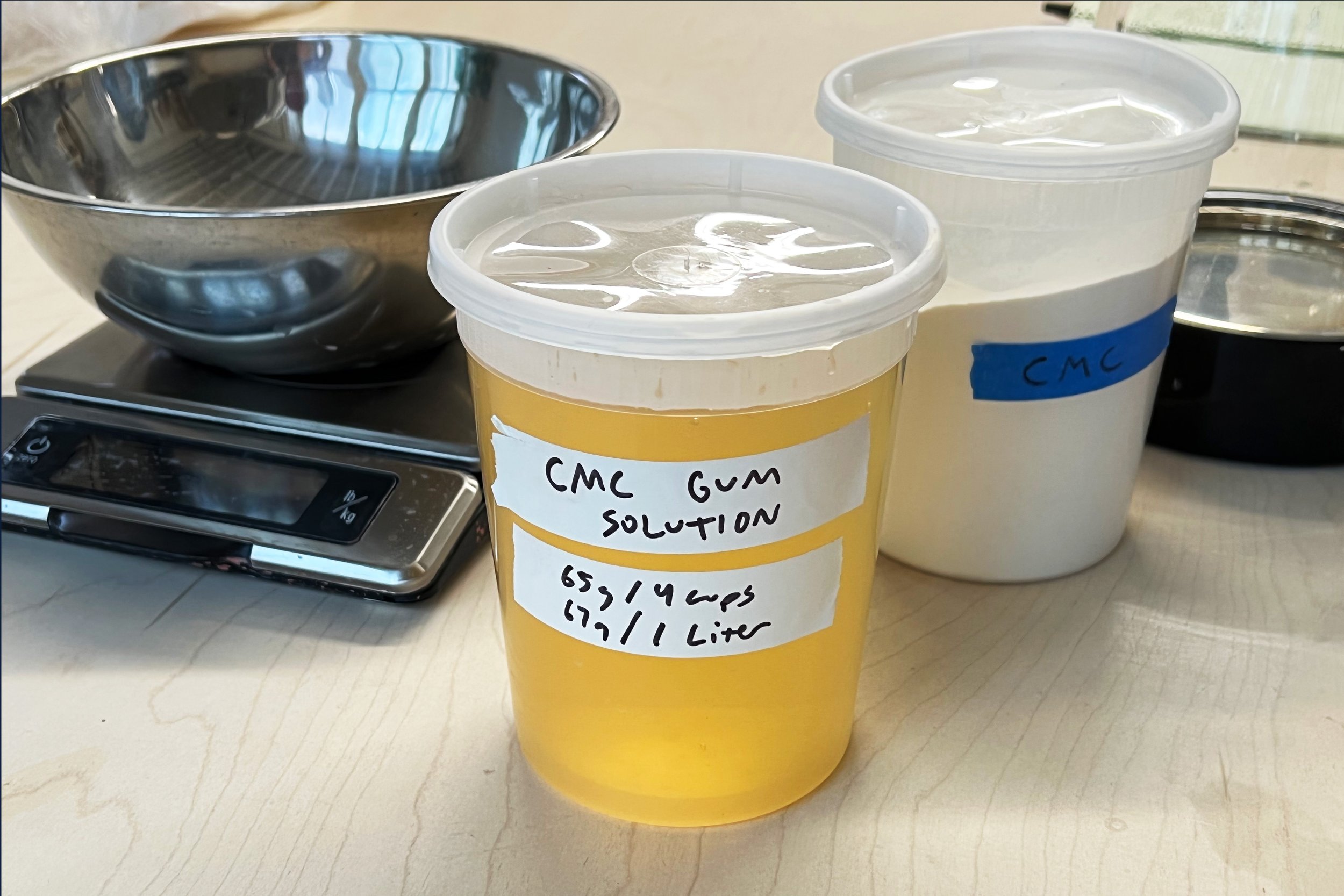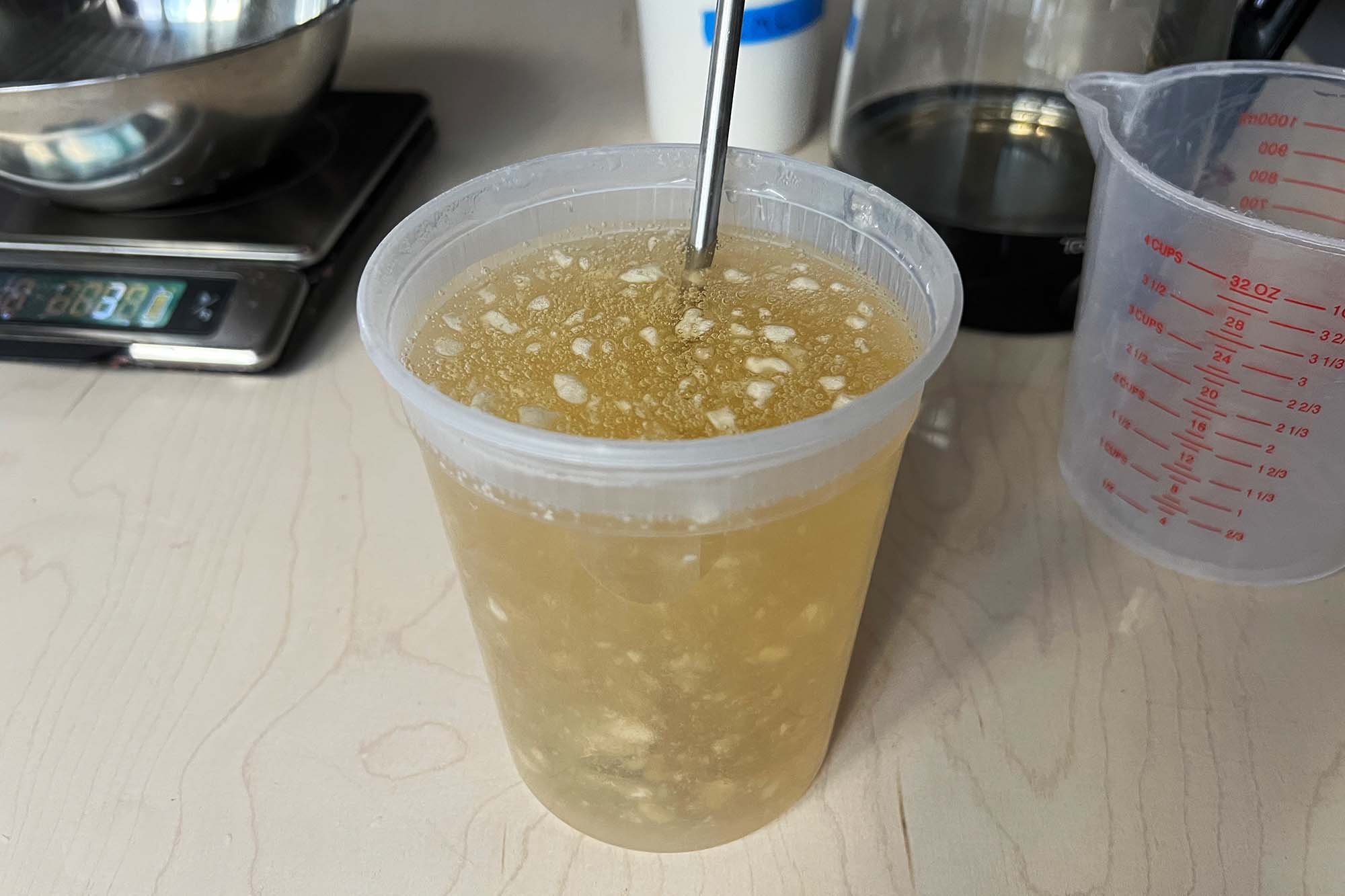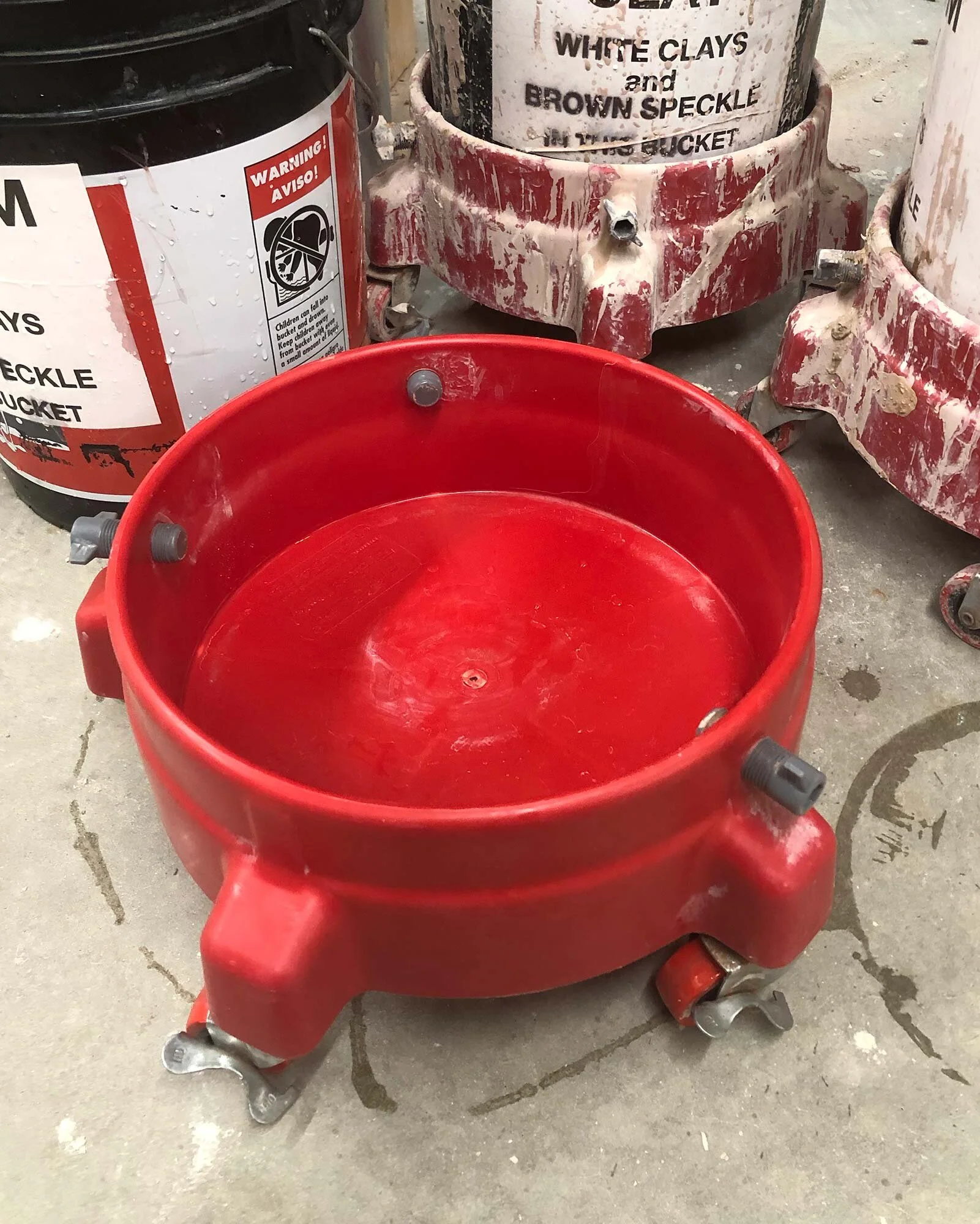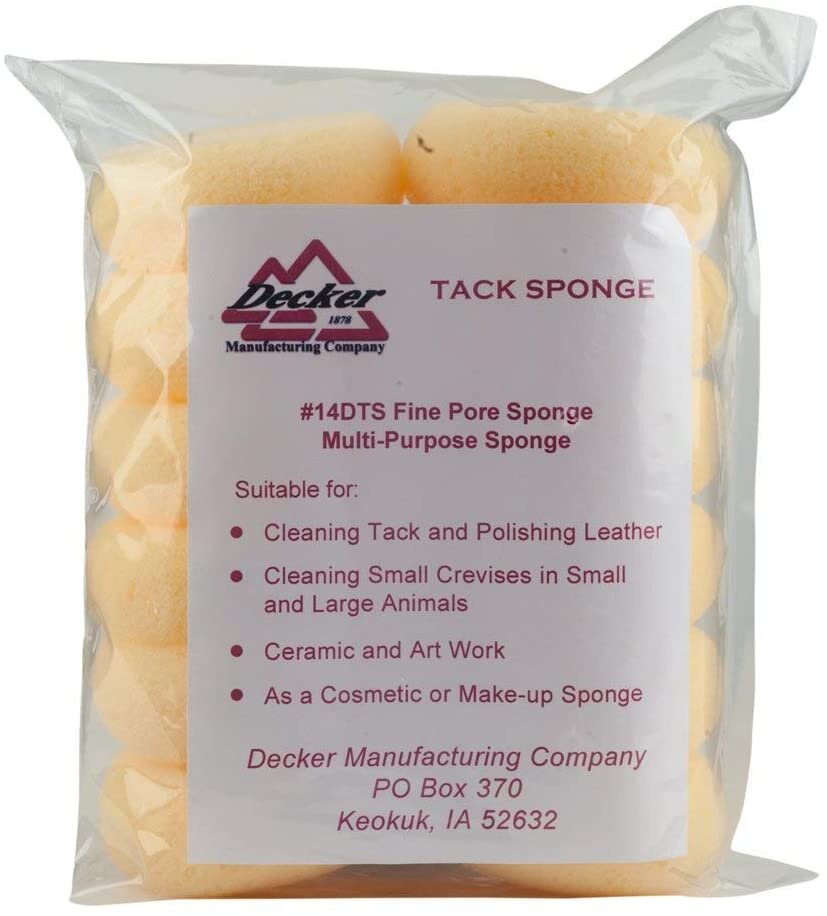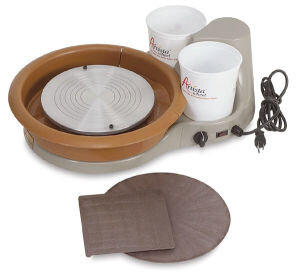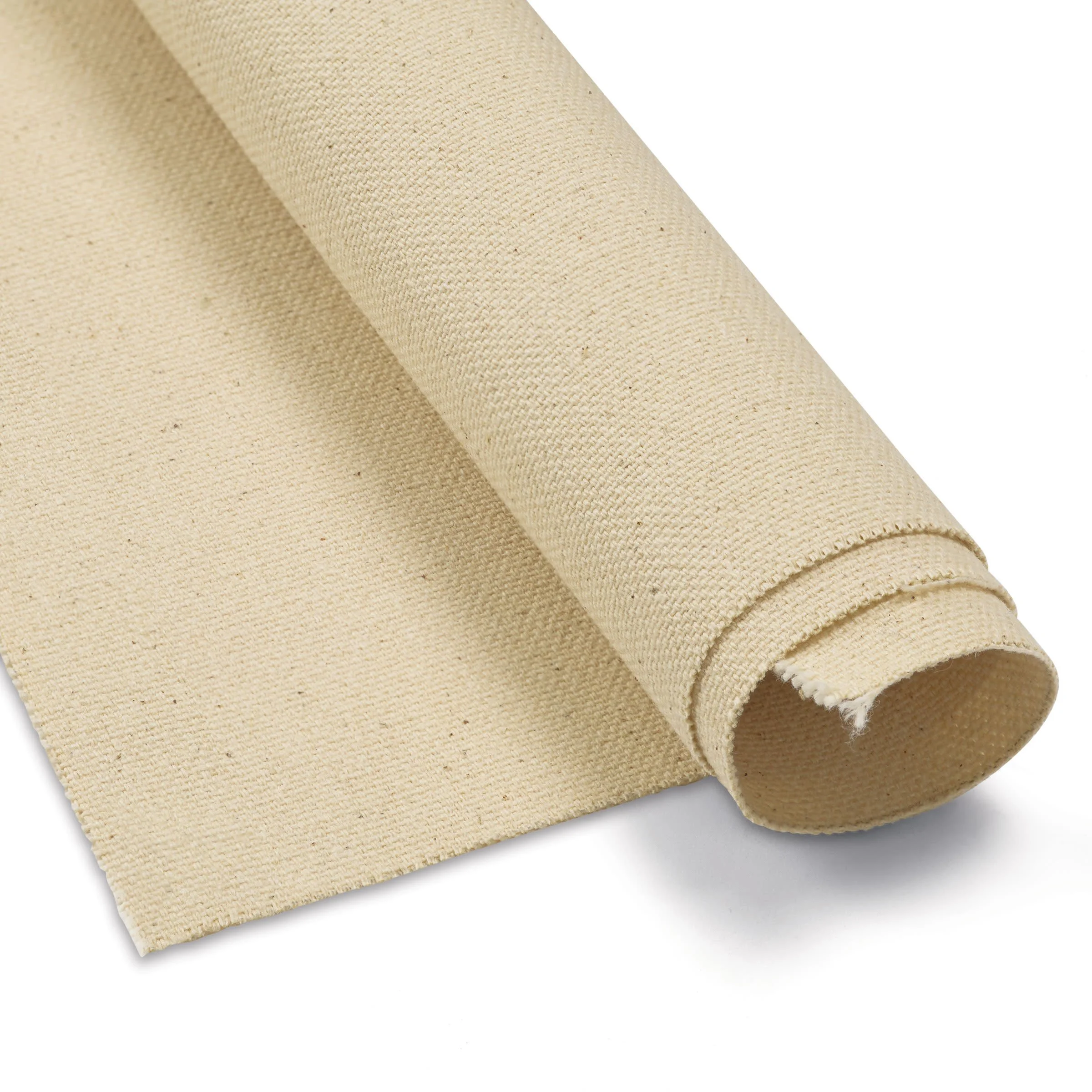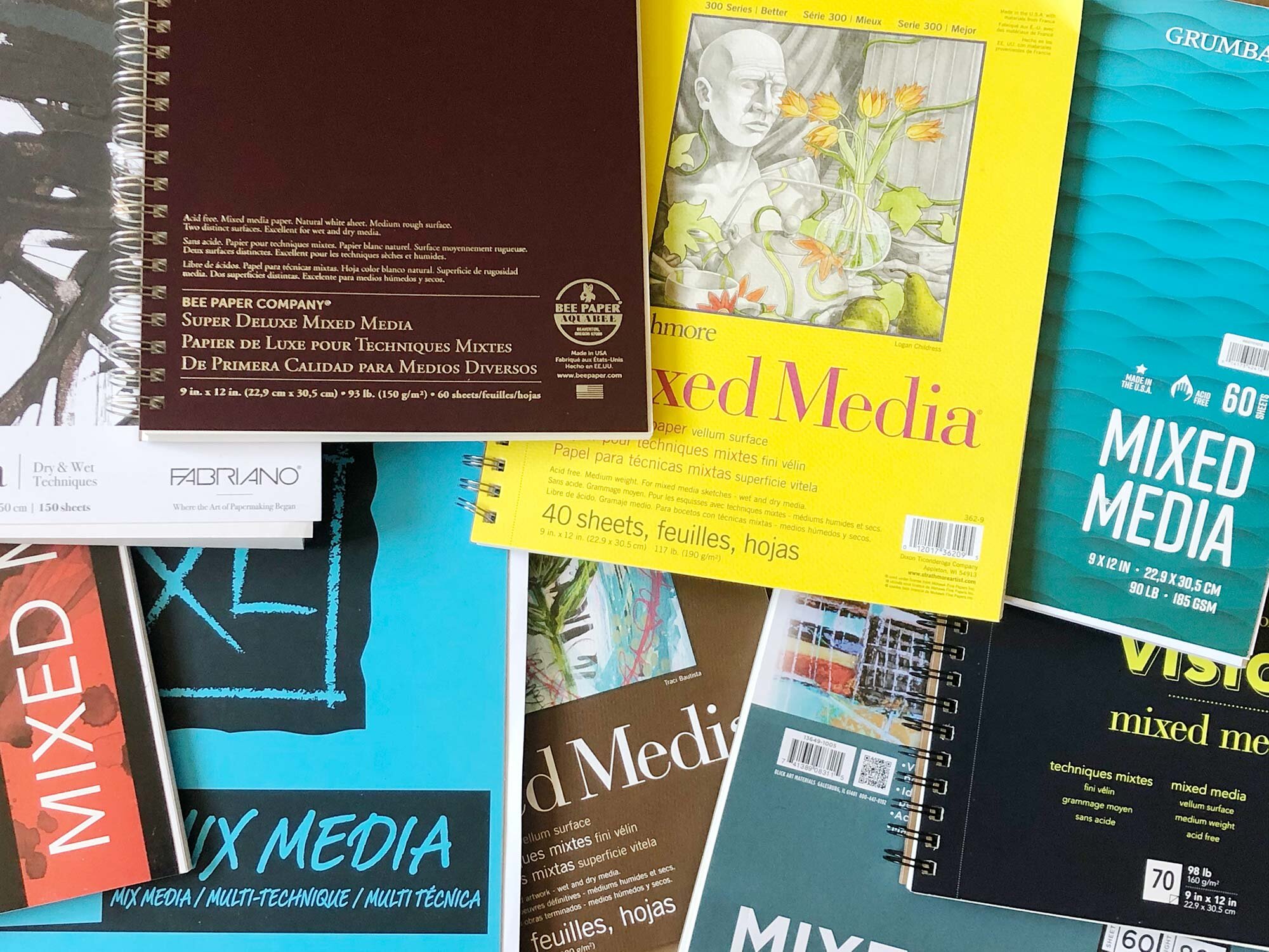CMC gum solution can really help your glazes and it’s easy to mix a quart or more with just a few dollars worth of CMC powder and water.
CMC (or carboxymethylcellulose) is a food-safe, organic material that is used as an additive to glazes and underglaze. It can do a variety of things for your glazes:
Slow down drying time, making a glaze more “brushable.”
Make a glaze stick better when it dries—just be sure to wait in between coats.
Help glaze stick when reglazing, if you are refiring a piece.
Help keep glaze materials in suspension and make the glaze more even for painting or spraying
Prevent glazes from cracking when drying, resulting in a more even glaze application.
Gum solution can be painted on top of glazes, to prevent them from peeling off a piece.
Amaco Gum Solution is one commercial option, or mix your own! (shop this at Amazon)
In short, think of CMC gum solution as a sort of glue-like liquid that can be added to all sorts of glazes and underglazes, and generally helps you achieve desirable glaze results.
Commercial vs Mixing Your Own
CMC gum solutions are available from a variety of ceramic suppliers, such as AMACO Gum Solution. (shop at Amazon) But at a cost of $15-$20 a pint, you can make your own for much cheaper with powdered CMC gum and water. This also allows you to control exactly how much CMC you want to add to your glazes. But if you don’t need a lot of gum solution, it can be easy to just order a pint of already prepared gum solution.
Mixing CMC Gum
CMC gum, just after being stirred into hot water. The material tends to clumps together.
CMC gum tends to bind and clump when added to water. This tutorial will show you how to easily mix a gum solution, which can then be added to your glazes as needed.
CMC can also be added to dry glaze mixes. Just combine and mix all the ingredients first, then add to water. Note: It is almost impossible to add dry CMC to an already mixed glaze.
If CMC is clumping in your glazes after mixing, you have two options: mix more or wait and let the material fully hydrate. This difficulty with mixing is why it’s best to use pre-mixed gum solution.
Why Mix Your Own
Not only is there a significant cost savings, but knowing the materials and exact recipe will allow you to modify glazes as needed in your studio. For example, if this gum solution is too thick, water it down. Or test and find the right amount of CMC or of gum solution to add to your glazes.
How Much CMC to Add
For this tutorial, we are recommending creating a gum solution with 67 grams of CMC per 1000 grams (1 liter) of water, or around 64 to 65 grams per 32 ounces (1 quart) of water. You can choose to make a lower concentration or water down your gum solution after mixing. This ratio was built on research posted here and is intended to mimic commercially available gum solutions. Some potters mix a gum solution at around 30 grams per quart / liter of water, so adjust as needed for your studio.
When adding this solution to your glazes, there is no hard and fast rule. You could start by replacing 5 percent of the water in your glaze with the gum solution, and then testing to see if it gives you the results needed. If not, add 5% more and test, and so on, until you reach the desired consistency and properties.
Some glaze recipes have CMC listed as an ingredient. If it’s listed, definitely add it dry and then adjust as needed if the glaze doesn’t suit your needs. Or calculate how much water will add the CMC needed. For example, if you mix 65 grams to 32 ounces of water, a half cup (4 ounces) of gum solution will contain 8.1 grams of CMC.
Drawbacks of CMC Gum Solutions
CMC is an organic material, so it can cause rotting or mold formation over time, but this is usually not a large concern with this material.
If added to a glaze, and the glaze then completely dries out, the CMC may act like a glue and turn the material into a sort of “brick” that will never rehydrate.
Other Gums and Brushing Mediums
This tutorial is specifically about CMC gum solution. There are other materials that have similar properties but are not the same, such as Veegum or Macaloid.
If you want to make your own brushing medium, mix 2 parts CMC to 8 parts Macaloid or Veegum by weight. Add 1% of this to a glaze by weight, and adjust higher if needed.
For a how-to on mixing CMC gum solution, keep reading below.
How To Mix CMC Gum Solution
All you need to make a CMC Gum solution is CMC powder, a scale, boiling water, a container, and something to mix.
Equipment and Materials needed:
Scale (For more on scales, check out our guide here)
CMC powder (Available at ceramic suppliers or shop at Amazon)
Hot / boiling water
Container
Stirring tool (use a spoon or try the small Jiffy Laboratory Mixer)
Step 1
Step 1: CMC powder is weighed and added to water.
Weigh the dry CMC powder and add to the boiling water. In the picture here, the full amount of CMC was added to approximately 3 cups of water, then the final cup of water was poured on top.
In this example, 65 grams was mixed in 32 ounces of water.
Other ratios are 67 grams per liter, or 260 grams per gallon. Adjust as needed for your studio.
Step 2
Step 2: Mix the CMC. It will clump at first.
Mix CMC with water.
The CMC will initially clump up. The hot water helps it mix, but after stirring by hand or with a drill, it will eventually mix together.
After the initial mixing, you can also cover the container and let the CMC hydrate overnight, and do a final mix as needed the next day.
After mixing a few minutes, the clumps will get smaller.
The clumps keep getting smaller with more mixing. You can also do an initial mix and then let the CMC hydrate over night.
Step 3
Step 3: The CMC is fully mixed with the water and the gum solution is ready.
Mix and adjust, then label your container.
Within a few minutes of mixing, your gum solution should have a syrup or glue-like consistency. If the clumps are gone, you are ready to use the gum solution as an additive to glazes.
The final result: CMC gum solution ready for use in the studio.
Do you use gum solution in your studio? What do you do with it? Let us know in the comments.
Shop the Material and Equipment in This Post
CMC powder is available at most ceramic suppliers. Or shop it at Amazon
Jiffy LM Laboratory Mixer: shop at Amazon
Oxo 11 pound scale: shop at Amazon | shop at Bed Bath & Beyond
Chef’s Choice Stainless Steel water kettle: shop at Amazon
Other Articles That May Interest You
